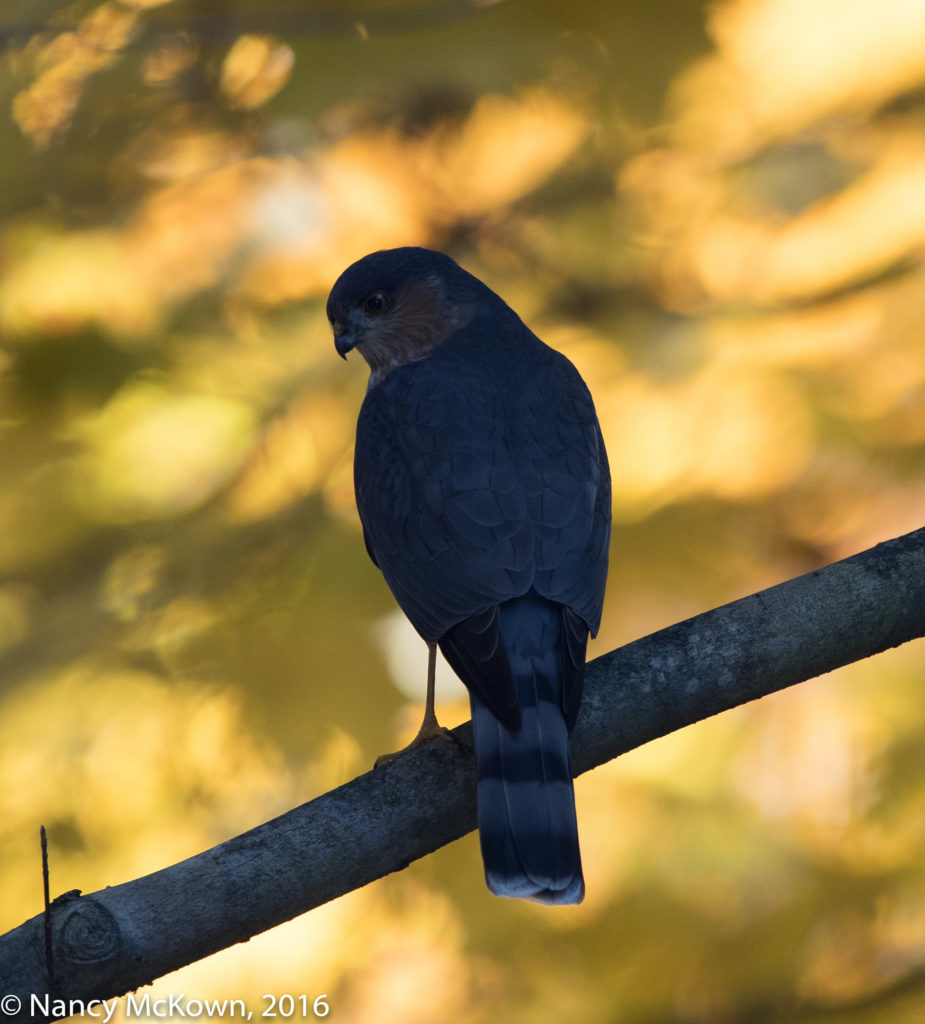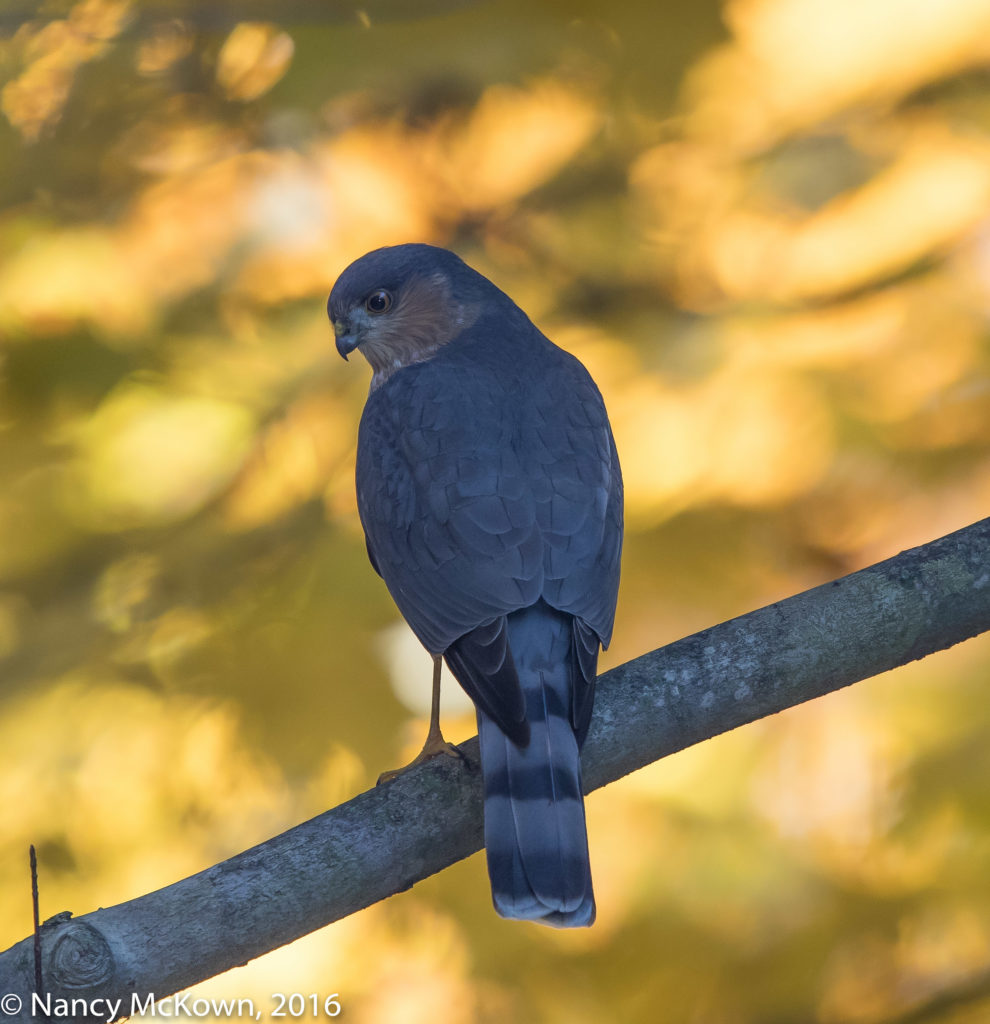Photographing a Sharp Shinned Hawk
I am sitting in the library behind the camera, working on my computer. Suspiciously quiet outside. I soon see why. A Sharp Shinned Hawk alights on a high branch above the deck. I point the lens up to capture him. Focus was immediate and I get one shot in before he notices me and flies away. I know before I preview it on the camera’s LCD screen that this will be a very disappointing image.
An Underexposed Silhouette
The exposure settings taken right before I moved the lens were based on the ambient light coming in from an open deck area with a woodsy background. The second I tilted the lens upward toward the sun to capture the image of the hawk, I no longer had an evenly spread distribution of light…. in fact, the light was substantially unbalanced.

As shot….No Lightroom Enhancement
ISO1250; f/8; 1/250 Second.
Observations
- Light meters work by measuring the reflective light that passes through the lens. The camera’s internal light meter was in Evaluative mode— meaning it was set to analyze the light intensity of the entire frame. (NOTE: Evaluative mode is considered to be the most intelligent in-camera light metering mode.)
- The camera was in Manual Mode with E-TTL II set to auto. FEC (Flash Exposure Compensation) was set at “0”.
- The intense background light dominated the E-TTL II light meter readings. E-TTL II -working with Evaluative mode-metered the ambient light on the entire scene and did the calculations to determine how much (if any) flash would be needed. (NOTE: It doesn’t look like it, but according to the meta data, the flash did fire.)
- The ISO was manually set to ISO 1200 to reduce impact of flash and allow more ambient light to dominant what I thought was going to be a camera level, low lit scene.
- Four auto focus points were activated for this shot, all clustered around the hawk’s body. No help there. E-TTL II light meter algorithms no long figure in autofocus point exposure bias when calculating exposure.
Light Meter Algorithms
Complex light meter algorithms are designed to do countless calculations… comparing, weighing, averaging, determining distance from lens, figuring out what to ignore, and measuring tonality and brightness of the scene. Ack! So many different variables often make for unpredictable results, especially when the camera is set to meter in broad based evaluative mode, with flash.
Exposure Fine Tuning
Bird photographers often don’t have the luxury of time to fine tune manual exposure settings and take the test shots needed to compensate for unsightly back lighting.
I find myself wishing that the camera’s metering mode had been set to partial or even spot metering. This may have provoked less of a silhouette effect because the light metering calculations would have been limited to a smaller, more specific area…more metering on the bird instead of the background.
I usually take my chances with Evaluative Mode… let it calculate its best guesses, and then adjust from there. Sadly, for this shoot, there was not time nor opportunity to make adjustments.
Well, that’s the way it goes in bird photography.

Same image as above – after Lightroom Shadow Enhancement
was applied to help to minimize the
silhouette effect- Shadow slider also made the image
look more grainy
ISO1250; f/8; 1/250 Second
NOTE: November 30th is the last day for firearm deer hunting season in Michigan. That means I’ll be spending more time in the woods with my camera. I’m looking forward to some new birding adventures.








